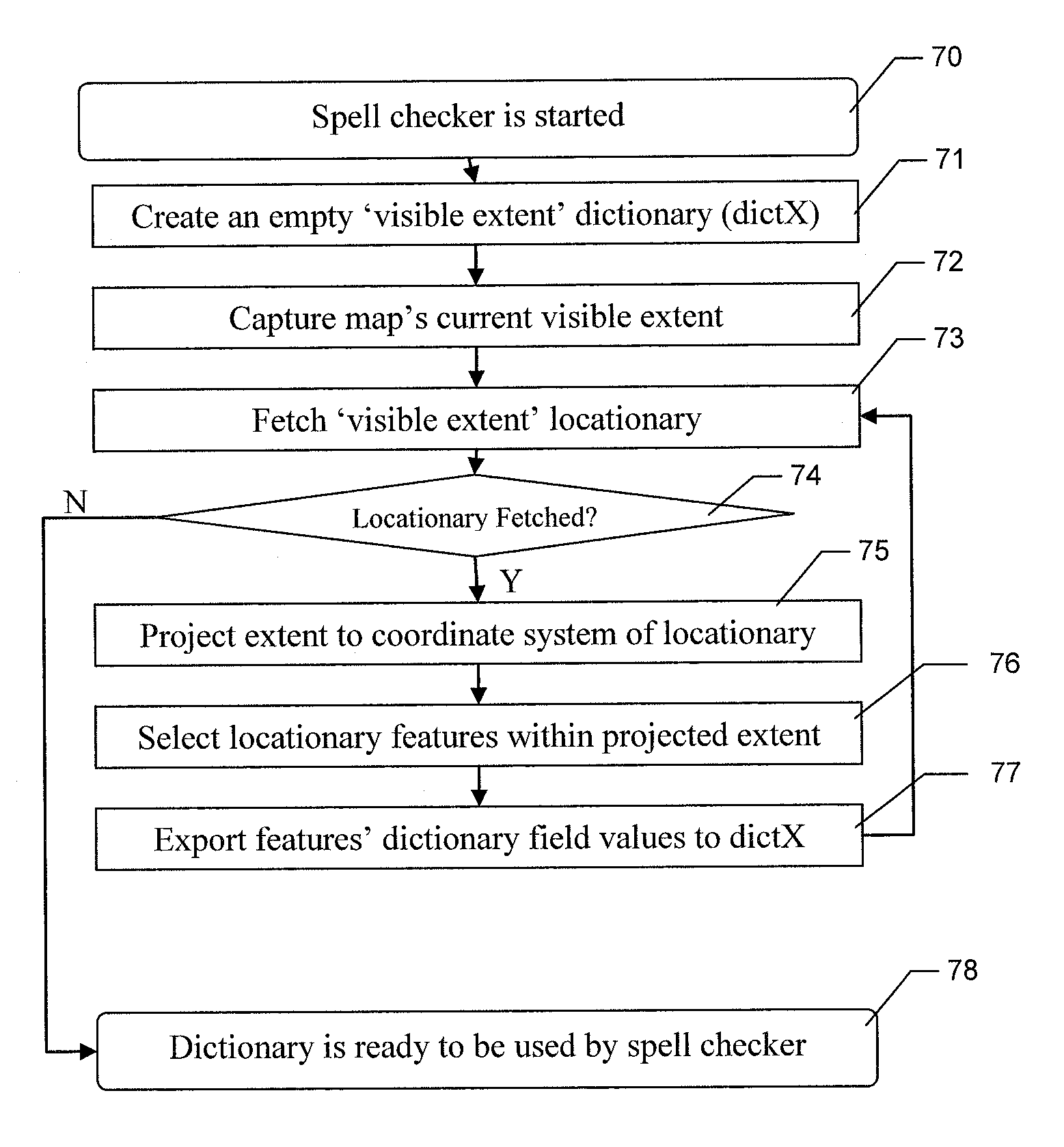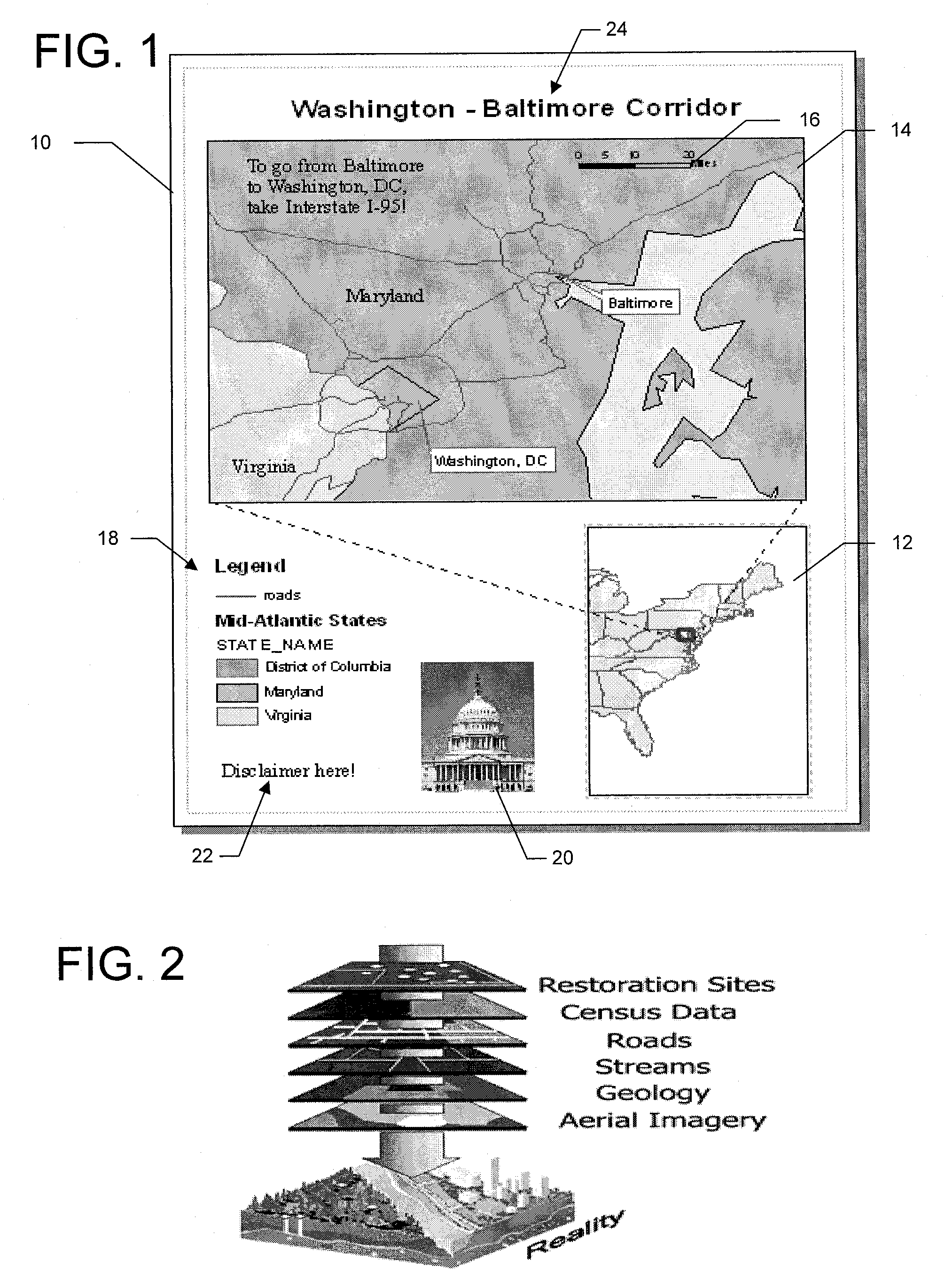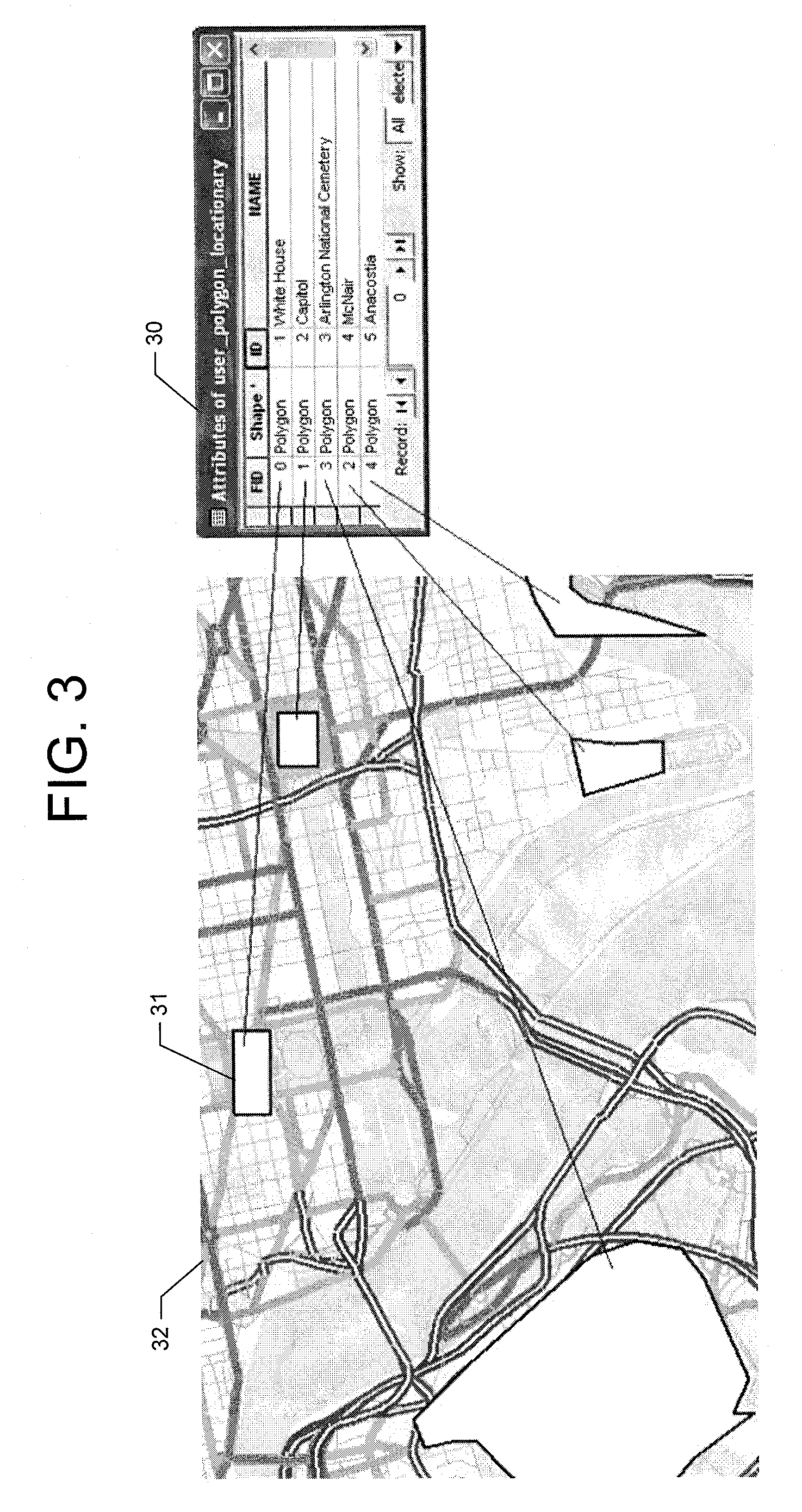Method for Spell-Checking Location-Bound Words Within a Document
a technology of location-bound words and document, which is applied in the field of finding and correcting misspelled words in such documents, can solve the problems of ineffective conventional method of spell checking, inability to include built-in spell checkers in software products, and inability to solve conceptual and technical difficulties relating to spell checking, so as to avoid embarrassment of typographical errors (typos), save time and resources, and save labor
- Summary
- Abstract
- Description
- Claims
- Application Information
AI Technical Summary
Benefits of technology
Problems solved by technology
Method used
Image
Examples
Embodiment Construction
[0042]The present invention now will be described more fully hereinafter with reference to the accompanying drawings, in which preferred embodiments of the invention are shown. This invention may, however, be embodied in many different forms and should not be construed as limited to the embodiments set forth herein; rather, these embodiments are provided so that this disclosure will be thorough and complete, and will fully convey the scope of the invention to those skilled in the art. Like numbers refer to like elements throughout.
[0043]The present invention makes it possible to meaningfully spell check maps and other documents where text is location-bound, such as geographically-bound, spatially-bound, or coordinate-bound. In a preferred embodiment, the present invention is configured to spell check GIS map documents. In a preferred embodiment, the systems and methods of the present invention have been implemented for the ArcGIS™ GIS software architecture, using the Microsoft Visua...
PUM
 Login to View More
Login to View More Abstract
Description
Claims
Application Information
 Login to View More
Login to View More - R&D
- Intellectual Property
- Life Sciences
- Materials
- Tech Scout
- Unparalleled Data Quality
- Higher Quality Content
- 60% Fewer Hallucinations
Browse by: Latest US Patents, China's latest patents, Technical Efficacy Thesaurus, Application Domain, Technology Topic, Popular Technical Reports.
© 2025 PatSnap. All rights reserved.Legal|Privacy policy|Modern Slavery Act Transparency Statement|Sitemap|About US| Contact US: help@patsnap.com



